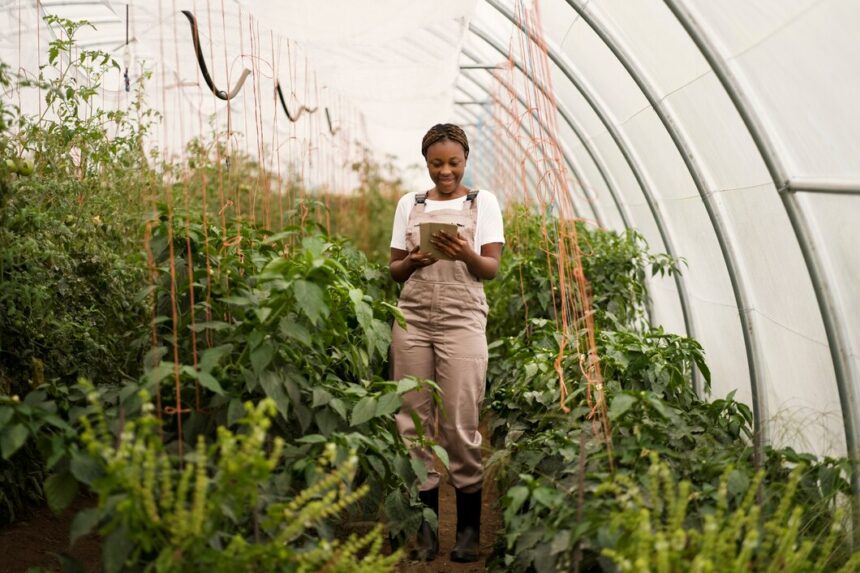Greenhouse farming offers South African farmers numerous advantages, including increased crop yields, improved crop quality, and enhanced control over environmental conditions. By implementing innovative techniques tailored to local conditions, farmers can optimize greenhouse productivity and profitability. Here are 10 techniques South African farmers can implement for successful greenhouse farming:
1. Climate Control Systems
Invest in climate control systems such as ventilation, heating, and cooling to maintain optimal growing conditions inside the greenhouse. Automated systems equipped with sensors can regulate temperature, humidity, and airflow, ensuring crops thrive regardless of external weather fluctuations.
2. Irrigation Management
Implement efficient irrigation systems, such as drip irrigation or hydroponics, to deliver water and nutrients directly to plant roots while minimizing water wastage. Monitor soil moisture levels and adjust irrigation schedules based on crop needs and environmental conditions to prevent over or under-watering.
3. Integrated Pest Management (IPM)
Adopt IPM strategies to prevent and manage pest and disease outbreaks in the greenhouse. This approach combines cultural practices, biological controls, and judicious use of pesticides to minimize the impact of pests while preserving beneficial insects and environmental quality.
4. Crop Rotation and Succession Planting
Practice crop rotation and succession planting to optimize space utilization and soil health in the greenhouse. Rotate crops with different nutrient requirements and growth habits to prevent soil depletion and reduce the risk of pest and disease buildup.
5. Soil Health Management
Maintain soil health through regular soil testing, amendments, and organic matter additions. Incorporate compost, cover crops, and organic fertilizers to improve soil structure, fertility, and microbial activity, supporting healthy plant growth and productivity.
6. Vertical Farming
Utilize vertical farming techniques to maximize production in limited greenhouse space. Vertical stacking systems, such as hydroponic towers or vertical gardens, allow farmers to grow crops vertically, optimizing light exposure and increasing yield per square meter.
7. Light Management
Optimize natural light exposure by selecting greenhouse orientation and installing light-diffusing materials to distribute sunlight evenly. Supplemental lighting, such as LED grow lights, can extend photoperiods and enhance plant growth, especially during short winter days or cloudy weather.
8. Nutrient Management
Implement precise nutrient management practices to provide crops with essential nutrients for optimal growth and development. Use soilless growing mediums like coco coir or rockwool supplemented with hydroponic nutrient solutions to deliver precise nutrient concentrations tailored to crop needs.
9. Pollination Enhancement
Facilitate pollination in the greenhouse by attracting pollinators such as bees or implementing manual pollination techniques. Deploying beehives or installing native plantings around the greenhouse can enhance pollinator populations and improve fruit set and yield.
10. Data-driven Decision Making
Utilize data collection and analysis tools to monitor greenhouse conditions, track crop performance, and make informed decisions. Implement sensors, data loggers, and crop monitoring software to collect real-time data on environmental parameters, plant health, and yield metrics, enabling proactive management and optimization of greenhouse operations.
Greenhouse farming holds immense potential for South African farmers to enhance productivity, profitability, and sustainability. By implementing advanced techniques such as climate control systems, efficient irrigation management, integrated pest management, and data-driven decision-making, farmers can overcome challenges and maximize yields in the controlled environment of the greenhouse. With careful planning, investment in appropriate technologies, and ongoing innovation, greenhouse farming can play a pivotal role in meeting the growing demand for fresh, locally grown produce while ensuring food security and economic prosperity for South Africa.
Join 'Farmers Mag' WhatsApp Channel
Get the latest Farming news and tips delivered straight to your WhatsApp
CLICK HERE TO JOIN






